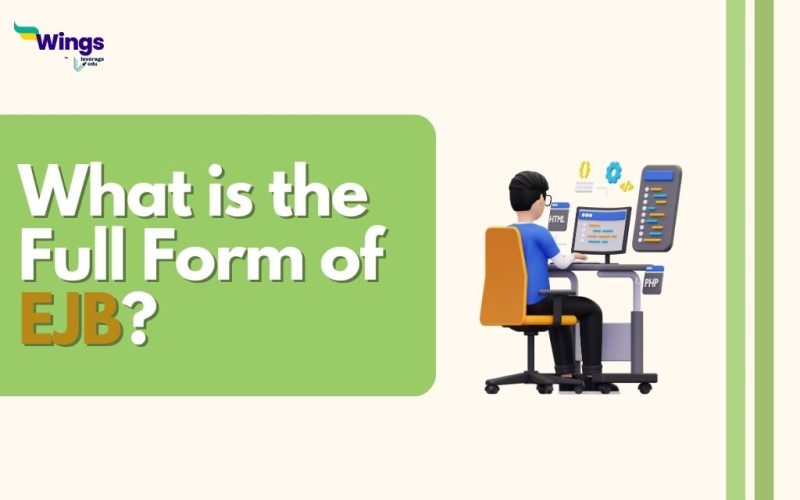EJB full form is Enterprise Java Bean. It is one of the JAVA application programming interfaces or APIs that are for the Java platform, enterprise applications, and Enterprise Edition (JEE). EJB summarises the business logic of an application. EJB is beneficial and an integral part of a J2EE platform. It is so because it helps provide an architecture to deploy and develop enterprise applications (component based); which considers high scalability, performance, and robustness. Moreover, the primary and important components of business processes are able to be communicated via EJB, which is a server-side software element.
Also Read: What is the Full Form of COBOL?
Types of Enterprise Java Beans (EJB)
Table of Contents [show]
EJB has three types that are categorised into the following
- Session Bean: It contains Business logic that can be evoked by a web service or remote, local client.
- Stateful Session Bean
- Stateless Session Bean
- Message Driven Bean: It contains Business logic that can be evoked by passing messages.
- Entity Bean: It is now replaced with Java Persistent API.
- Bean Managed Persistence
- Container Managed Persistence
When To Use EJB?
EJB supports applications with a variety of requirements. Enterprise Java Beans can be used in the following cases
- When an application needs to be distributed or requires remote access.
- When an application requires an encapsulated business logic.
- When there is a need for the application to be scalable as EJB applications support not only clustering but also load balancing.
Also Read: What is the Full Form of CTBT?
We hope this has helped you understand EJB full form and everything related to it. Do you want to know more full forms like this? In the world of short forms, you can rely on our page to know more! Discover more such short forms that can help enhance your general knowledge! Stay tuned for all updates and don’t forget to follow us on Instagram, Facebook, Twitter, and Linkedin.
 One app for all your study abroad needs
One app for all your study abroad needs















 45,000+ students trusted us with their dreams. Take the first step today!
45,000+ students trusted us with their dreams. Take the first step today!
